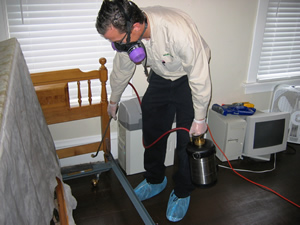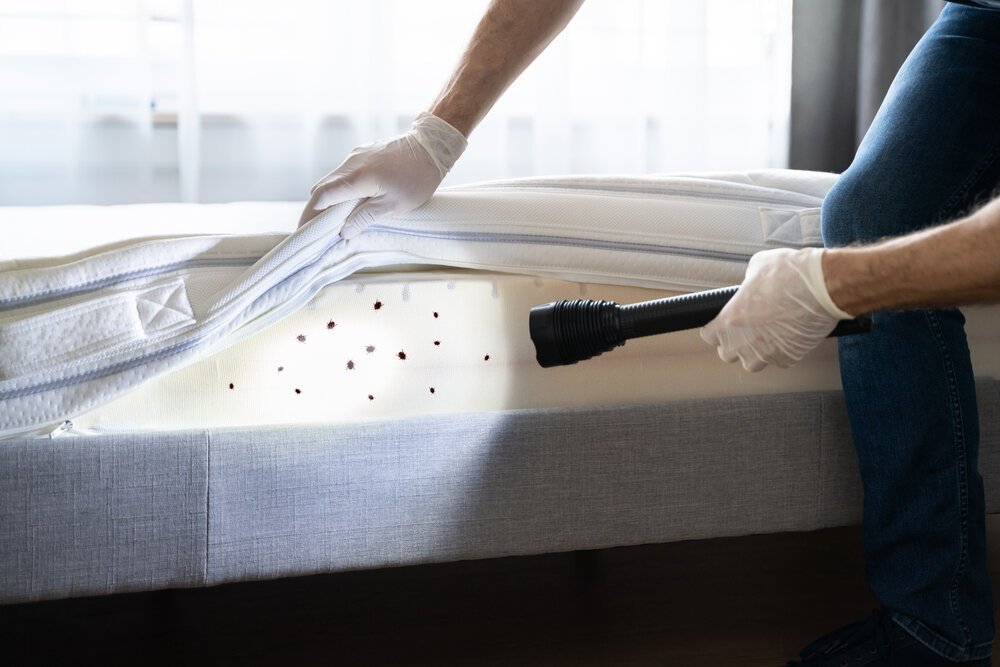Professional Bed Bug Exterminator: DC Providers and Heat Treatment
Professional Bed Bug Exterminator: DC Providers and Heat Treatment
Blog Article
Exploring the Science Behind Bed Pest Warm Treatments as a Lasting Insect Monitoring Method
In the realm of bug management, the mission for sustainable and efficient solutions stays a consistent pursuit. One such approach that has obtained traction over the last few years is the usage of heat treatments to battle bed bug problems. By utilizing the scientific research behind thermal death points for these consistent parasites, warm therapies offer an appealing choice to traditional chemical-based approaches. The details of exactly how warm properly eliminates bed bugs and the wider implications for lasting parasite monitoring techniques make this a subject worth exploring additionally.
Bed Pest Warmth Therapy Refine

Thermal Death Point for Bed Pests
Revealing bed bugs to raised temperature levels past their thermal tolerance array is important for attaining efficient removal in warmth treatment procedures. The thermal death factor for bed insects describes the temperature at which these parasites can not survive. Research study indicates that bed insects start to die when exposed to temperature levels above 113 ° F(45 ° C) for a sustained duration. As the temperature boosts, so does the death rate of bed insects. At around 118 ° F(48 ° C ), bed pests start to die quickly, with a death rate of almost 99% within mins of exposure. This demonstrates the level of sensitivity of bed bugs to high temperatures and highlights the performance of heat treatments in eradicating infestations. By reaching and keeping temperatures above the thermal fatality factor for bed pests, pest management specialists can make sure comprehensive elimination of bed insect populaces, consisting of hard-to-reach locations where chemical therapies might be much less reliable. Understanding the thermal death factor for bed insects is essential for executing successful warm treatment methods and accomplishing lasting bug monitoring end results.
Benefits of Warmth Treatments
Having actually developed the essential thermal fatality factor for bed pests, it is imperative to now explore the substantial benefits that heat treatments provide in efficiently getting rid of these resistant insects. When contrasted to standard chemical techniques, heat therapies existing several crucial advantages. Among the key advantages is that heat can permeate deep into gaps and cracks where bed insects hide, guaranteeing that also the most hard-to-reach locations are heated to deadly temperature levels. This extensive strategy not only eliminates real-time insects yet also targets bed insect eggs, preventing future invasions.
Furthermore, heat treatments are safe and eco-friendly, making them a lasting pest administration method. Unlike chemical pesticides, warmth therapies do not leave harmful residues that can position dangers to human health and wellness or the atmosphere. This element is specifically vital in delicate settings such as hospitals, schools, and houses where chemical use may not be desirable.
Additionally, warm treatments have a high success rate in getting rid of bed insect invasions in a solitary treatment, minimizing the requirement for several sees and lessening disturbance to owners. This performance not just conserves money and time however also provides tranquility of mind to those taking care of bed insect issues.
Effectiveness of Warmth Therapy

Warmth therapies have the added benefit read this post here of killing bed insect eggs, which are commonly immune to typical chemical treatments. Overall, the effectiveness of warm treatments in removing bed insect invasions makes them a lasting and reliable pest management strategy.
Sustainable Pest Management Benefits
Executing sustainable pest monitoring techniques uses long-term benefits for both the setting and public health and wellness. By utilizing methods such as warmth treatments for pest control, we can lower the dependence on damaging chemical pesticides that can have adverse results on ecological communities and human health and wellness - DC exterminator. Sustainable bug administration strategies assist in preserving biodiversity by targeting specific bugs without harming non-target microorganisms, thus maintaining a well balanced community
Furthermore, sustainable parasite administration practices contribute to the overall health and wellness and well-being of the general public. By minimizing direct exposure to toxic chemicals utilized in conventional parasite control techniques, warmth treatments he said give a safer choice for pest administration in residential, industrial, and public rooms. This decrease in chemical usage likewise aids in avoiding chemical deposits from contaminating dirt, water, and air, safeguarding environmental high quality.
Verdict
Finally, bed insect warm therapies have actually been shown to be a efficient and lasting bug monitoring strategy. The thermal death point for bed insects makes them at risk to heat you could look here therapies, which have various benefits over typical chemical treatments. The efficiency of heat therapies in removing bed insect infestations while decreasing environmental impact highlights the possibility of this technique as a lasting remedy for pest control.
The bed bug heat treatment process involves raising the temperature within infested areas to a level that efficiently gets rid of bed bugs and their eggs. By reaching and maintaining temperatures above the thermal fatality factor for bed pests, bug monitoring experts can make sure detailed elimination of bed bug populations, consisting of hard-to-reach locations where chemical therapies may be less effective. One of the key benefits is that warm can permeate deep into cracks and crevices where bed pests conceal, guaranteeing that even the most hard-to-reach areas are warmed to dangerous temperature levels. Unlike chemical treatments that might leave behind immune populations, heat treatments offer a safe and eco friendly service that can penetrate deep right into furnishings, wall surfaces, and various other hard-to-reach areas where bed bugs conceal.
The thermal fatality point for bed pests makes them prone to warm therapies, which have various advantages over traditional chemical treatments.
Report this page